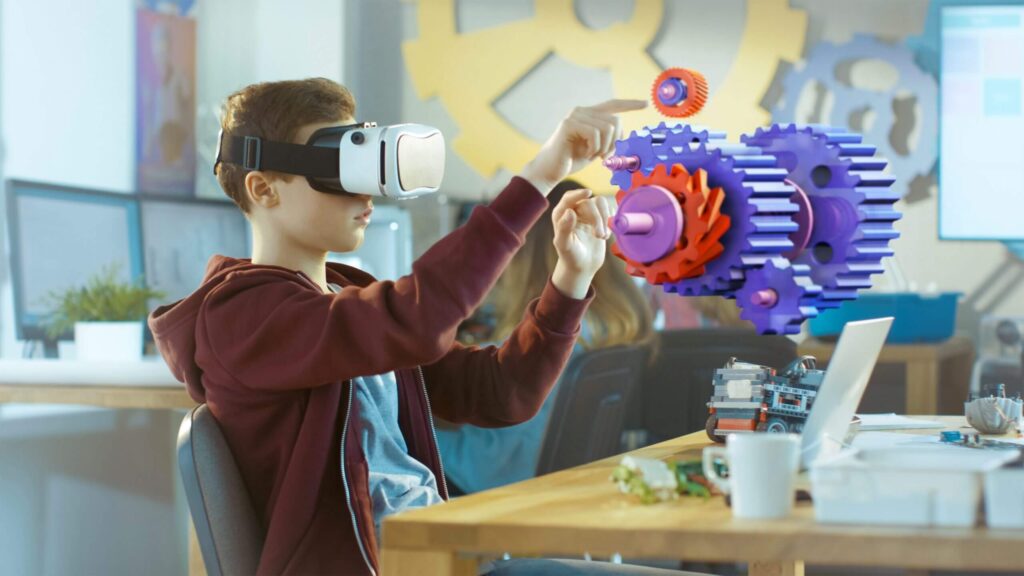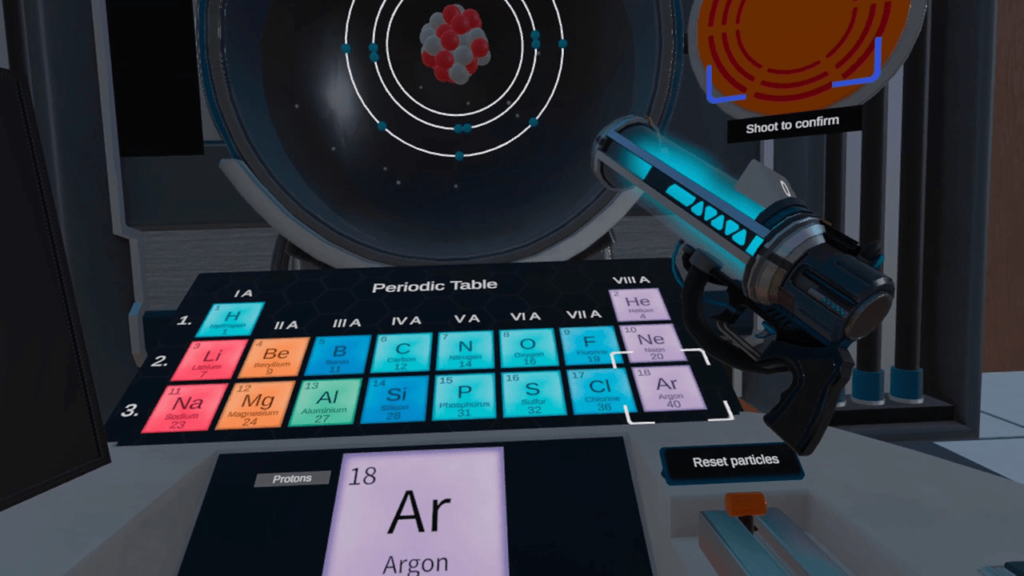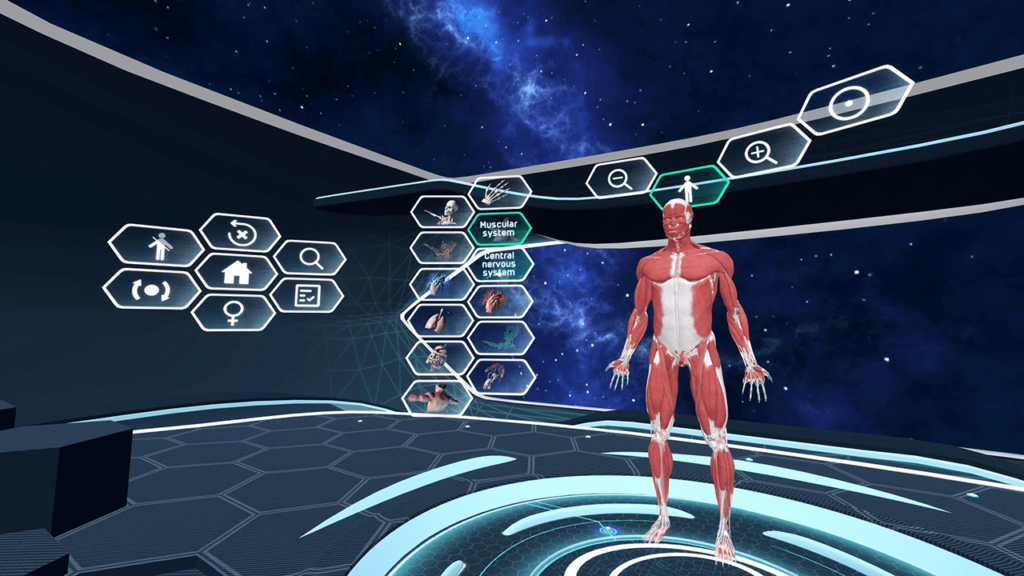In recent years, the field of education has experienced a transformative shift with the integration of virtual reality (VR) games. Educational VR games are reshaping the way students learn, engage with educational content, and develop crucial skills – becoming a powerful tool for educators in many areas and providing an innovative approach to make learning more engaging and effective.
In this article, we want to explore the realm of educational VR games, talking about all their benefits and how they can impact educational practices.
Read as well: The art of simple character design in video games

Educational VR games
Educational VR games are interactive, immersive experiences designed to facilitate learning in a virtual environment. These games leverage the capabilities of VR technology to provide users with a more engaging and realistic educational experience.
Their most common form is virtual worlds that allow users to explore and interact with different elements in a three-dimensional space, often designed to simulate real-world scenarios or historical settings, providing a more hands-on and experiential learning experience.
They also allow for the creation of realistic simulations that enable users to actively participate in various educational activities from a great range of subjects, including science, mathematics, history, language, and arts.
Many educational VR experiences incorporate gamification elements, such as challenges, rewards, and progression systems, to keep users motivated and engaged. Some even support collaborative modes, allowing users to learn and solve problems together in a shared virtual space.
Some examples of educational VR games include Google Earth VR and The Body VR.
Immersive learning environments
The biggest advantage of educational VR games is their great capacity for creating immersive learning environments. They leverage cutting-edge technology to enable students to explore a wide array of subjects – from historical events and scientific concepts to complex mathematical equations – all within the confines of a three-dimensional virtual space.
The key advantage of educational VR games lies in their ability to provide a multisensory learning experience. By engaging students on a visual, auditory, and sometimes even tactile level, these games significantly enhance retention and understanding.
The immersive nature of VR allows students to step into the shoes of historical figures, witness scientific phenomena up close, or manipulate virtual objects to grasp mathematical principles in ways that traditional textbooks and lectures cannot achieve.
Educational VR games also cater to various learning styles, accommodating visual and kinesthetic learners.
The ability to customize learning experiences based on individual preferences ensures that students can grasp complex concepts at their own pace, reinforcing a sense of autonomy and empowerment in their educational journey.
Educational VR games can even offer hands-on experiences that would be challenging or impossible to replicate in a traditional classroom setting. Take, for instance, the exploration of the human anatomy through virtual dissection.
Students can engage in the dissection of virtual frogs, allowing them to intricately examine organs and biological structures, fostering a deeper understanding of anatomy without the ethical and logistical challenges associated with real dissections.
Even outer space becomes a classroom itself through virtual reality! Students can embark on captivating journeys to explore the solar system, witnessing celestial phenomena and planetary landscapes up close.

Gamified and collaborative learning
The utilization of game design elements in educational VR games serves to create an environment that fosters intrinsic motivation among students. By incorporating features such as points, badges, leaderboards, and interactive challenges, educators can tap into the natural human inclination for competition and achievement.
These elements not only make the learning process more enjoyable but also provide students with a tangible sense of accomplishment as they navigate through educational content within the virtual realm.
Educational VR games can present information in a story-driven format, weaving educational objectives seamlessly into the plot. This not only captures the students’ interest but also promotes a deeper understanding of the subject by connecting facts and concepts within a meaningful context.
The interactive nature of VR games also fosters a perfect collaborative learning environment.
Multiplayer features enable students to work together, solve problems, and overcome challenges as a team. This social aspect of gamified learning not only mirrors real-world scenarios but also cultivates important interpersonal skills such as communication, teamwork, and critical thinking.
In addition to motivation and engagement, educational VR games offer a level of personalization that caters to individual learning styles and paces.
The adaptive nature of these games allows students to progress at their speed, receive instant feedback, and revisit challenging concepts until mastery is achieved. This tailored approach addresses the diverse needs of learners and promotes a sense of autonomy and self-directed learning.

Overcoming learning difficulties
Educational VR games have emerged as a promising solution to address a multitude of learning barriers encountered by students with diverse needs.
The innovative approach of its many technologies proves particularly effective for individuals with varying learning styles, attention disorders, and physical disabilities, offering a transformative educational experience.
Traditional teaching methods often employ a one-size-fits-all approach, which may not resonate with every student. VR games, on the other hand, provide a customizable and interactive learning environment that can adapt to the individual preferences and learning styles of students.
Whether a student learns best through visual, auditory, or kinesthetic means, VR games can be tailored to accommodate these diverse needs, fostering a more inclusive and effective learning experience.
For students with attention disorders, maintaining focus in a traditional classroom setting can be challenging. Educational VR games leverage the immersive power of virtual reality to captivate and sustain the attention of these students.
By creating a dynamic and engaging learning environment, VR games can minimize distractions and increase the level of student engagement, making the educational content more accessible and memorable.
Moreover, students with physical disabilities face unique challenges in traditional educational settings. VR games provide an opportunity for these students to interact with educational content in a more physically accommodating way.
Through the use of VR controllers, voice commands, or other adaptive technologies, students with physical disabilities can actively participate in learning activities, breaking down physical barriers and promoting an inclusive educational experience.

The future of educational VR games
As technology continues to advance, the potential for educational VR games to transform learning experiences is boundless. They bridge the gap between theory and application and inspire a love for learning by making education an exciting and interactive adventure.
In the rapidly evolving landscape of education, the integration of VR games represents a paradigm shift that propels learning into a new dimension, unlocking the full potential of students in an ever-expanding virtual universe.
As technology continues to advance, the integration of VR games in education is likely to become even more prevalent, shaping the future of learning for generations to come.
And we here at Main Leaf are paying close attention to all these transformations. We have seen the rise in popularity of VR technology over our 11 years of experience in the game development industry, and are excited to see how it will shape education in the future. If you liked this article, don’t forget to check our blog – where we discuss many other subjects relating to the world of game development.

